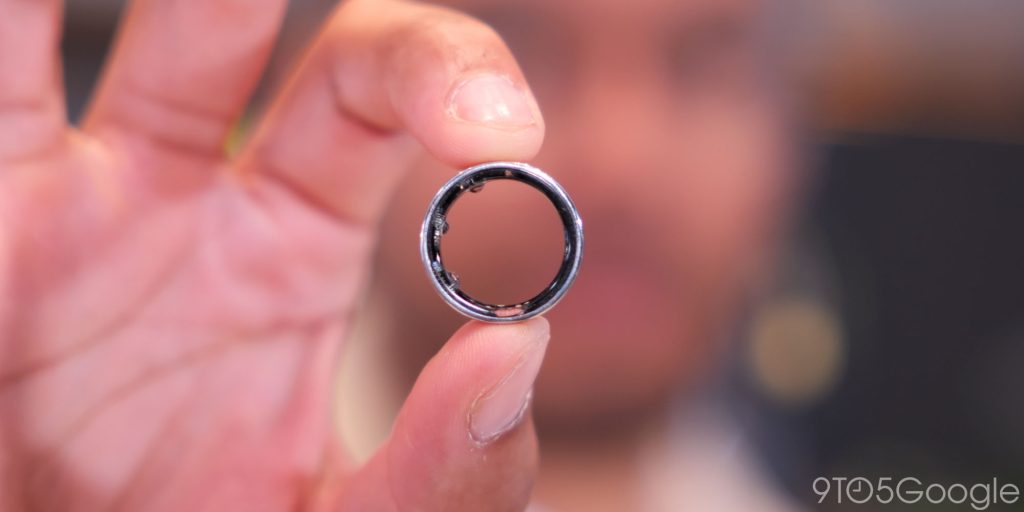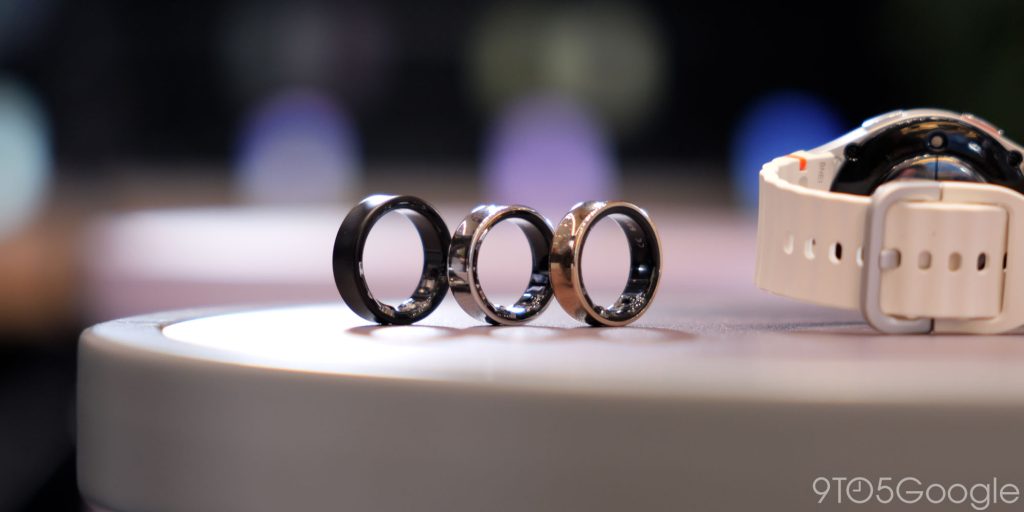
Samsung’s wearable landscape is about to expand with a new form factor: the Galaxy Ring, which is joining the ranks alongside the Galaxy Watch 7 and Watch Ultra. While both cater to health and wellness enthusiasts, they offer very distinct experiences. Let’s delve into the details to help you decide which one best fits your needs.
Smart rings are nothing new. Oura has taken on the mantle as the biggest and best thus far, but Samsung has decided to enter the marketplace and shake up smart wearables once again. It’s a new form factor for the Korean tech giant and has some benefits and drawbacks. Is a ring better than a watch? Here’s everything you need to know.
Table of contents
Size, shape, and form factor
It’s obvious right away that the Galaxy Watch 7 and the Galaxy Ring are made for different things and different audiences. Like most smartwatches, the Watch 7 has all the bells and whistles. If you want notifications, deep fitness tracking, third-party apps, and Google-powered services on your wrist, then you’ll want this Wear OS watch. You can’t replicate a display without one, so if you need visual feedback, the Galaxy Ring might not be ideal for you.
| Galaxy Ring | Galaxy Watch 7 | Galaxy Watch Ultra | |
| Display size | ❌ | 40mm: 1.3-inch 44mm: 1.5-inch | 47mm: 1.5-inch |
| Display resolution | ❌ | 40mm: 432 x 432pixels 44mm: 480 x 480 pixels | 480 x 480 pixels |
| Dimensions | 7.0 x 2.6mm (Size 5 to 13) 48.9 x 48.9 x 24.51mm (charging case) | 40mm: 40.4 x 40.4 x 9.7mm 44mm: 44.4 x 44.4 x 9.7mm | 47.1 x 47.4 x 12.1mm |
| Processor | Not specified | Exynos W1000 | Exynos W1000 |
| RAM | 8MB | 2GB | 2GB |
| Storage | Not specified | 32GB | 32GB |
| Weight | 2.3g (Size 5) up to 3.0g (Size 13) 62g (charging case) | 40mm: 28.8g 44mm: 33.8g | 60.5g |
| Battery | 18mAh (Size 5) up to 23.5mAh (Size 13) | 40mm: 300mAh 44mm: 425mAh | 590mAh |
| Features | 10ATM water resistance Accelerometer PPG Skin Temperature BLE 5.4 | 5ATM water resistance Samsung BioActive Sensor Temperature Sensor Accelerometer Barometer Gyro Sensor Geomagnetic Sensor Light Sensor | 10ATM water resistance Samsung BioActive Sensor Temperature Sensor Accelerometer Barometer Gyro Sensor Geomagnetic Sensor Light Sensor |
| Colors | Titanium Black / Titanium Silver / Titanium Gold | 40mm: Green / Cream 44mm: Green / Silver | Titanium Sliver / Titanium Gray / Titanium White |
However, the Galaxy Ring is a couple of things in one. It’s an inconspicuous piece of jewelry that stuffs some tech under the surface. At under 3 grams, the Samsung Galaxy Ring is designed for 24/7 health monitoring versus the proposed 48-hour window that the Galaxy Watch 7 and Galaxy Watch Ultra can offer.
While the Galaxy Watch 7 has 40mm and 44mm sizes, and the Watch Ultra has a 49mm version, you have up to 9 sizes of the Galaxy Ring to choose from. This means you can find the perfect size for any of your digits, but it’s worth noting that the Galaxy Ring is only available on the US sizing scale of 5-13. The design is clean but super basic. Each ring is a solid loop with a minor concave shape that, in tandem with the titanium finish, an IP68 rating, and 10ATM water resistance, should mean better long-term durability than a smartwatch.


Given the size and shape differences, the Galaxy Ring is the better fitness-tracking option if you want something that doesn’t get in the way. The downside is that you must measure your finger, which means no adjustability. Samsung offers “sizing kits” to help you find the perfect fit. One thing that probably should be noted is that if you gain or lose weight, the ring might not fit properly. The Galaxy Watch 7 only requires a strap adjustment.
Samsung also doesn’t specifically recommend wearing the Galaxy Ring for some workouts like weightlifting. While the design should withstand these specific kinds of workouts, it might not be great for potential snag risks to your fingers when worn. There are similar risks with a smartwatch, but it’s not directly in the “line of fire,” so to speak, meaning that the Galaxy Ring might be a better option depending on your activities.
Because you can’t interact with anything on the Galaxy Ring, it relies on gestures like a finger pinch to do things on your phone. You can only use the double pinch to take photos with your camera or dismiss alarms. It would be great to be able to do more, so maybe that can be expanded in the future with software updates, as the Galaxy Watch has double pinch gestures that can do just a little bit more.
Focus and Functionality


So, without a screen and no direct interactive functions, the Galaxy Ring is laser-focused on basic health tracking. There simply isn’t room for lots of sensors an in-device hardware. It does the basics like sleep pattern tracking, heart rate and blood oxygen level monitoring, and skin temperature readings. It even features period cycle tracking and detailed sleep data points like movement levels, heart rate, and respiratory rate.
A new metric called “Energy Score” combines many of those aforementioned metrics to rate your daily output levels. This analyses your sleep and recent stats to help you understand your daily condition and gives you “Wellness Tips.”
The Galaxy Watch 7, on the other hand, is an exceptionally versatile smartwatch. It has all of its predecessors’ core fitness tracking features but has an improved BioActive sensor for more accurate tracking of various workouts.
One key difference lies in how you access your data. The Galaxy Watch 7 has a built-in display, allowing you to view your health metrics and notifications and even interact with apps directly on your wrist. The Galaxy Ring, lacking a display, means you are almost always tethered to a smartphone app to see your data and receive notifications or be aware they have arrived. It also lacks any vibration-based feedback, so it’s completely passive as a health and fitness wearable.
As you’d expect, the Galaxy Ring’s auto workout functions are fairly limited compared to those of the Galaxy Watch 7 and Ultra because of that. You only get automatic running and walking tracking, but menstrual cycle tracking is available. Inactive alerts on your paired smartphone tell you when it’s time to get moving again.
While the Galaxy Ring and Galaxy Watch 7 might seem like very different options, they kind of work better as a pair. The Watch’s GPS tracking and broader functionality enhance the Ring’s focus on continuous, discreet health monitoring. When worn together, heart rate measurements are said to be more accurate, and you can leave the Galaxy Watch behind when you just want to go for a run and long walk.
To put it simply, if you care about accurate data, the Galaxy Ring might not be the ideal solo accessory to pick up.
Battery and lifespan

Samsung touts up to 7 days of battery life with the Galaxy Ring from a single charge. That has a huge advantage over the Galaxy Watch 7, which will typically require daily charging to keep going.
If you’re using the Watch in tandem with the Galaxy Ring, you might get longer times between charges too. As the workload is shared between each wearable. That said, we haven’t had the opportunity to fully test this at the time of writing.
A brand new charge cradle has been designed for the Galaxy Ring to account for the form factor. The carry case doubles up as the charger like a pair of earbuds. This keeps the Galaxy Ring protected and can be used with wireless chargers or USB-C cable. There is no change in the Galaxy Watch 7 charging method.
Galaxy Ring vs. Galaxy Watch 7: Which device is right for you?

About upgrading: 9to5Google often gives specific product recommendations. Sometimes, we may suggest not upgrading, due to various reasons including, but not limited to: increased device cost, negligible performance gains, or environmental impact. Whether to upgrade is always your call, but our aim is to help you make as informed a decision as possible.
The pricing is one of the biggest downsides to the Galaxy Ring right now. It has lots of benefits over a smartwatch or even a basic fitness tracker because it’s a regular piece of jewelry. However, it’s $399, and you do lose out on quite a few important things to account for the tiny size. Even so, the tracking options might be enough given the compromises.
Ultimately, the choice between Galaxy Ring and Galaxy Watch 7 hinges on your priorities. The Galaxy Ring holds immense potential for those seeking a discreet health tracker with long battery life.
If you value a comprehensive smartwatch experience with fitness tracking, notifications, and app integration, the Galaxy Watch 7 is naturally the better fit. Even so, the possibility of these wearables working together seamlessly opens up exciting possibilities for a truly holistic health and fitness ecosystem from Samsung.
Pre-order Galaxy Ring
Pre-order Galaxy Watch
FTC: We use income earning auto affiliate links. More.


Comments